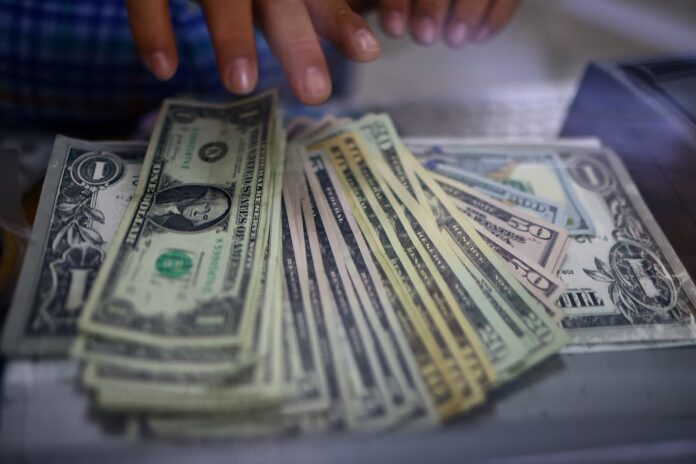
The U.S. dollar held steady in early Asian trading on Monday, buoyed by optimism that the prolonged U.S. government shutdown could soon end, easing investor demand for safe-haven assets even as weak global data reignited growth worries.
The dollar index, which tracks the greenback against a basket of six major currencies, rose 0.2% to 99.740, snapping a three-day losing streak as both the yen and euro slipped. The gains came after U.S. lawmakers signaled progress toward a deal to reopen the federal government.
Senate Majority Leader John Thune said bipartisan talks had “taken a positive turn,” with the U.S. Senate moving toward a vote to approve temporary funding through January.
“This is just in the nick of time,” said Tony Sycamore, market analyst at IG in Sydney. “The retreat we saw in the U.S. dollar into the end of last week probably continues now.”
Last week’s economic data had highlighted the toll of the shutdown, with the University of Michigan’s consumer sentiment index falling to its lowest level in nearly three-and-a-half years in early November.
“The consumer confidence data was a shocker and clear evidence that the shutdown was affecting households, so this does alleviate some of the damage,” Sycamore added, referring to the possible deal.
The dollar strengthened 0.3% to 153.82 yen, aided by comments from Japanese Prime Minister Sanae Takaichi, who announced plans to replace Japan’s annual fiscal target with a multi-year spending framework, a shift seen as softening the government’s commitment to fiscal discipline.
The Bank of Japan’s latest summary of opinions also noted that “the fog surrounding Japan’s economic outlook has begun to clear compared with July.”
Globally, investors are weighing the impact of U.S. President Donald Trump’s economic policies and trade measures.
Recent Chinese data showed consumer price inflation rose faster than expected, while exports recorded their sharpest decline since February, underscoring headwinds for Asia’s trade-dependent economies.
“We expect a renewed downshift in Asia’s economic growth now that export front-loading has largely run its course,” said Eric Robertsen, chief strategist at Standard Chartered Bank.
“With the region’s rate-cutting cycle nearly complete, we expect inflows to local assets to slow,” he added, warning that global liquidity could weaken in 2026, potentially boosting the dollar further.
Fed funds futures pricing suggested a 67% probability of a 25-basis-point rate cut at the Federal Reserve’s December 10 meeting, unchanged from Friday, according to CME Group’s FedWatch tool.
In currency trading, the euro edged down 0.1% to $1.155, while sterling slipped 0.2% to $1.314. The offshore yuan was steady at 7.1261 per dollar.
Among commodity-linked currencies, the Australian dollar firmed 0.1% to $0.6502, while the New Zealand dollar dipped 0.1% to $0.5626.
Analysts said the dollar’s near-term trajectory will hinge on congressional progress toward reopening the government and upcoming U.S. economic data, which could shape expectations for the Federal Reserve’s policy path heading into 2026.
Source: Reuters
Written By Rodney Mbua


















